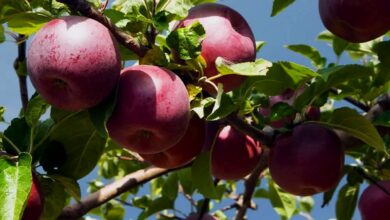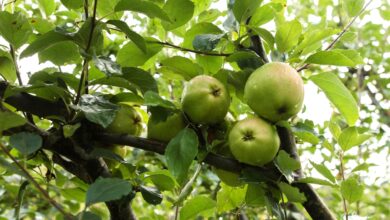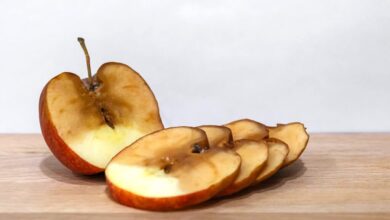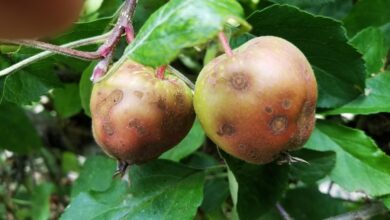Water Sprout Removal in Apple Trees: Step-by-Step Pruning Guide
Best Practices for Removing Water Sprouts on Apple Trees to Boost Growth
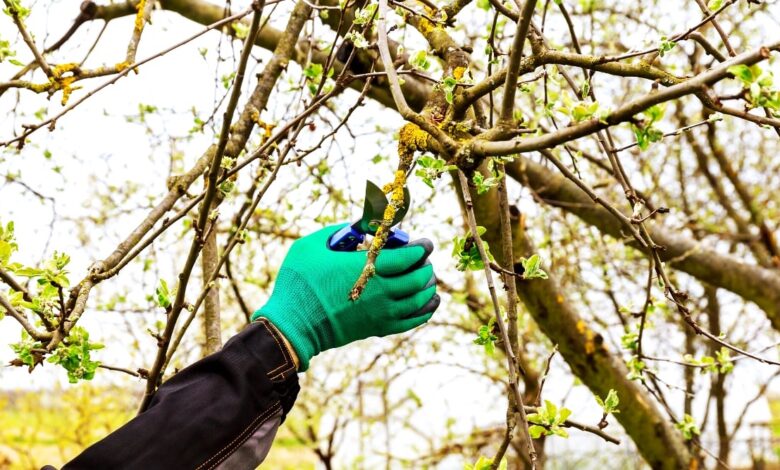
How to Prune Apple Tree Water Sprouts: Essential Tips for Healthy Trees
Apple tree water sprouts deplete a tree’s energy stores without offering anything in return. This article will explain the causes of unsightly water sprouts and how to deal with them.
How Do Water Sprouts Occur?
Water sprouts are tiny shoots that emerge from an apple tree’s trunk or branches. The majority of water sprouts are useless and never yield many fruits. Numerous never yield any fruit at all.
Another name for them is suckers, but this word actually describes growth that comes from the roots more precisely than from the trunk and branches. Water sprouts are cut off by apple tree growers so that the tree can focus all of its energy on supporting fruitful branches.
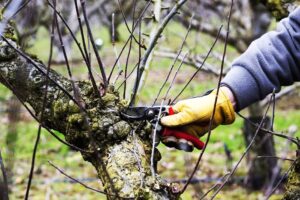
Pruning water sprouts and sucker growth on apple trees promotes tree health because the unwanted growth has little resistance to insect and disease invasion. In addition to removing extra foliage, removing water sprouts allows sunlight and fresh air to penetrate deep into the tree’s canopy.
Sprouts of Water
Dormant buds can be found on the trunk and branches of apples. It is from these buds that are dormant that water sprouts will appear.
They typically appear when a tree experiences stress of some kind, as the plant tries to find a way to quickly produce nutrients.
However, if these growths are left in place, it will not be optimal for the specimen’s long-term health because they are meant to be a temporary fix.
This is due to their lower productivity and weaker attachment compared to a permanent branch. In essence, the purpose of these growths is to make room for additional leaves to elongate and aid in feeding the tree.
This kind of stress response can be brought on by trauma, heavy pruning, pest infestations, dry spells, compacted soil, and other conditions.
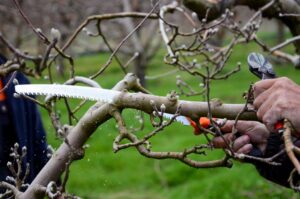
In essence, these new growths can appear as a result of any damage done to the tree.
Unlike shoots, which come from the roots or trunk beneath a bud graft, water sprouts are different.
Water sprouts and shoots are similar in that they are growths meant to support the survival of the tree. They simply show up in various plant sections.
How to Recognize Sprouts in Water
Typical branches grow outward or at a slight angle, but water spouts grow straight and upright from a bud on the branch or trunk.
Moreover, they emerge from the same bud in clusters.
You’ll frequently notice that the affected apples grow considerably more quickly than the normal branches if you watch them.
These growths usually don’t have the craggy shape and rough bark of typical branches. They grow in clusters and have smoother bark on average.
Lastly, while water sprouts can appear at any time of year, with the exception of the dormant season, apples typically sprout new growth in the spring.
It’s simple to spot water sprouts on your apple in the future if you know how to recognize them. They have a rather unique appearance.
Identifying Water Sprouts in Apple Trees
Your apple tree’s rapid growth isn’t always a good thing. One day, you might notice a lot of new growth outside and believe that something good is occurring.
Although it’s simple to misinterpret clusters of newly emerging branches as an indication of your tree’s health and vitality, this sight can actually indicate quite the opposite.
To keep your apple in the best and most productive shape, you should remove any water sprouts as soon as possible.
When a tree is stressed, it will send out branches known as water sprouts. Things like trauma, drought, or overpruning can all contribute to this.
As soon as they appear, you should take immediate action to get rid of them and try to determine what the heck caused them in the first place.
Water sprouts are bad for all species, but they are particularly bad for apples because they can significantly lower fruit yield.
If you’re excited to get rid of these scoundrels, let’s get started by removing the pruners.
Why Must They Be Taken Out?
The issue with water sprouts is that they weaken and break easily over time, don’t bear fruit when they’re young, and eventually drain the tree of its energy.
Water sprouts break off more readily because their affixation to the tree is weaker. That, as you can imagine, is a recipe for trouble for a branch that is loaded with large, juicy apples.
The plant may become more vulnerable to disease and pests as a result of these broken sections.
These growths can eventually form a more stable attachment, but it will require some patience and cautious pruning.
Furthermore, these sprouts have an unattractive appearance and crowd out the crown, which lowers overall vigor.
In the past, “topping” a tree was thought to be a useful method of revitalizing a neglected plant.
We now know that topped specimens typically yield large numbers of feeble water sprouts, and that the trees are generally weaker and more prone to infestation or infection.
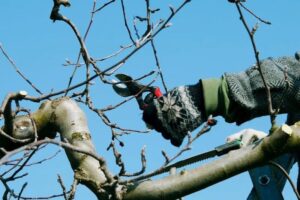
Every fruit tree in the little orchard I purchased with my house had been topped. Weak water sprouts in masses covered them. Don’t worry if you find yourself in a similar circumstance.
You can regenerate a healthy crown, but it will require some work over a number of years.
You won’t be eliminating every water sprout in this instance. Some will remain in their current location to develop into new, healthy branches. However, in most cases, you want to remove any that show up.
Ways to Get Rid of Water Sprouts
The dormant season is the best time to prune most plants, but if you see water sprouts forming, you should pull them out as soon as possible.
However, it’s best to try to complete the majority of your pruning during the dormant season, which is late fall, winter, or very early spring, if you are working with a neglected tree that has a lot of growth to remove.
The first thing to remember is that you don’t want to eliminate too many at once. You already know what will happen if you stress the tree. Yes! There are more water sprouts.
Instead, progressively thin them out. It’s not a huge deal to remove six or so growths from a branch, but if you have a dozen or more, don’t remove more than one-third of the growths at once.
Try to give the remaining sprouts as much space as you can.
If some sprouts must be kept, as happens when a tree is topped, look for ones that grow outwards by nature, as opposed to upwards, or those you can fasten to another branch so that they train outward. To strengthen a sprout, you can also trim it back to a leaf bud.
A water sprout can be pruned by cutting it flush to the branch from which it is emerging with a saw, clippers, or pruners.
Though it may be tempting, resist the urge to bandage or seal the wound. That’s more out-of-date advice to follow.
Without our assistance, your specimen will be able to defend itself at the site of the wound thanks to the sap it produces there.
Upkeep
It’s not as though you can unwind after removing your water spouts. This is the moment to be alert.
It’s also necessary to determine what initially caused the weak growths. If not, you will simply be engaged in an endless struggle.
Going forward, you will always need to remove these sprouts if topping caused the growths.
Right now, there is simply nothing you can do to find a long-term solution. The tree is so traumatized that it will always be vulnerable to this type of growth.
However, you must address the root cause if they resulted from trauma from insect damage, softer pruning, or something similar that might be more subtle.
Examine the roots and soil. Has any root loss occurred? Is there compacted soil? Examine your methods for trimming. Is there enough water reaching the ground? Do you observe any indications of illness or pests? Have any of the branches sustained damage?
Once the cause of these unwanted growths has been identified, take the appropriate action to address it. The tree will take a few years to stop producing these kinds of branches, but after that, things will get back to normal.
After the issue has been resolved, keep eliminating any new ones that arise for the first few years. Keep an eye out for any young plants that are budding, and remove them with a rub or a snap before they get big enough to require pruning.
It’s time to have the difficult talk: When things don’t get better, you have to decide if a tree is still worth keeping around.
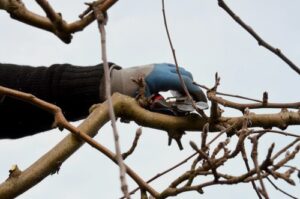
I understand that taking down a tree that has grown since maybe before you were even born is painful, but there are instances when a tree becomes more of a liability than a benefit.
Your specimen is probably unhealthy and may be nearing the end of its life if it keeps producing these branches in spite of your best efforts and you observe that the true branches that are already present in the canopy are dying.
These kinds of trees frequently experience heartwood and root rot and eventually topple.
For this reason, in certain cases, it’s preferable to cut down a tree rather than attempt to save one that might end up causing harm to someone or damaging property.
Apple Tree Maintenance Tips
Apple trees typically reach a maximum age of 50 years, at which point they begin to yield fruit no more. They might live a few more decades, but if they do bear fruit at all, it will be very little.
A few more years of production could be maintained by a few, but this is not the norm.
It may be time to send your tree to the great orchard in the sky if it is getting close to fifty years old, is experiencing dieback, and is producing a lot of water sprouts.
Sometimes you can plant another apple tree nearby and give it a few years to mature before removing the older one if you notice the early signs of decline, which include a sharp increase in the number of water sprouts.
You won’t have to go without your preferred fresh apples in this manner.
Water Sprouts Are a Disgusting Issue
Water sprouts are unsightly and require patience to manage. To be honest, though, there may be much more serious issues with your apple trees. Simply put, fire blight.
Everything will work out in the end if you identify what caused them in the first place, remove them fast, and catch them early.
Taking Out the Water Sprouts from Apple Trees
On apple trees, water sprouts typically appear where there has been damage to the bark, such as pruning wounds on the trunk or branches. Renovated trees may have an abundance of water sprouts the following summer if they have been neglected for a long time. When they first emerge, you can easily pluck them off with your fingers. You’ll have to cut them later.
Pruning an apple tree should be done during its winter dormancy, but you should do it as soon as the water sprouts and suckers appear in late spring or early summer. When they are no longer than 12 inches (31 cm) in length, try to catch them. You can now remove them with your hands.
Pruning shears will be required once the sprout’s base turns woody and hardens. Even though you should cut as close to the parent branch as you can, you might not be able to get the sprout’s whole base. If you leave some of the original growth, they might grow again.
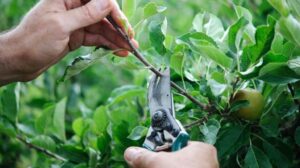
Preventing the spread of disease can be achieved by thoroughly cleaning your pruners in between cuts. Mix one part household bleach with nine parts water to create a solution.
As an alternative, you can use a household disinfectant with full strength, like Lysol. To eliminate any bacteria or fungal spores that you might have picked up from the previous cut, dip your pruners into the solution in between cuts. Pitting can occur if your pruners are not completely cleaned before storage or if they are left in bleach for an extended amount of time.

